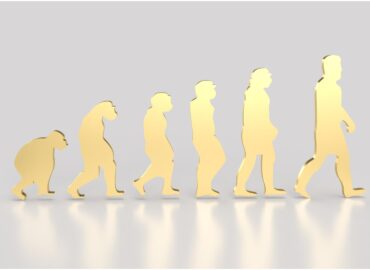Skill Mapping Cheat Sheet: A 5-Step Masterclass for CHROs and HRs
Skill mapping is the systematic process of identifying the skills required for specific roles within your organization and aligning them with the skills your employees possess.
In today’s dynamic business landscape, where innovation and agility are paramount, staying ahead of the curve requires a workforce equipped with the right skills. But identifying skill gaps and charting a development path for your employees can be a complex and time-consuming task. Here’s where skill mapping comes in – a powerful tool for CHROs and HRs to gain deep insights into their workforce capabilities and make informed decisions about talent development.
What is Skill Mapping?
Skill mapping creates a visual representation of skill proficiency across your workforce, highlighting strengths, weaknesses, and potential development areas. By leveraging skill mapping, CHROs and HRs can:
- Bridge the talent gap: Identify critical skills needed for current and future business needs and assess how well your workforce aligns with those requirements. This proactive approach allows you to address skill gaps before they hinder your business strategy.
- Optimize training programs: Move beyond a scattershot approach to training by focusing on the skills that matter most. Skill mapping data helps you tailor training programs to address specific skill deficiencies and ensure your employees are getting the development they need to excel in their roles.
- Improve talent mobility: Enhance your ability to identify employees with transferable skills who can be redeployed to fill open positions or take on new challenges. Skill mapping allows you to see the bigger picture of your workforce’s capabilities and make informed decisions about internal talent mobility.
- Boost employee engagement: When employees feel they have the skills and development opportunities to succeed, they’re more likely to be engaged and productive. Skill mapping demonstrates your commitment to their growth and helps them see a clear path for career advancement.
The 5-Step Skill Mapping Masterclass
Step 1: Define Your Skill Taxonomy
The foundation of your skill mapping journey lies in creating a clear and comprehensive skill taxonomy. This involves:
- Outlining core competencies: Start by identifying the essential competencies needed for each role within your organization. These competencies should be directly linked to your business strategy and the specific functions of each position.
- Breaking down competencies into skills: Further decompose these core competencies into specific, measurable skills. For instance, the competency of “communication” might encompass skills like active listening, public speaking, and written communication.
- Categorizing skills: Organize your skills into categories such as technical skills, soft skills, and leadership qualities. This helps you gain a more holistic view of your workforce’s capabilities.
PeopleBlox, a leading HR technology platform, offers a comprehensive skill library that can be a valuable starting point for building your taxonomy. This library provides a vast array of pre-defined skills that can be easily customized to fit the specific needs of your organization.
Step 2: Assess Your Workforce
Once you’ve established your skill taxonomy, the next step is to gather data on your employees’ skill levels. Here are some effective methods you can use:
- Skills assessments: Design skills assessments that are specific to each role and competency. These assessments can take various formats, such as multiple-choice questions, simulations, or skills demonstrations. PeopleBlox’s Skill Mapping feature allows you to create customized assessments with ease, ensuring a targeted evaluation process.
- Self-evaluations: Encourage employees to self-evaluate their skill levels through surveys or questionnaires. While self-evaluations can provide valuable insights, it’s crucial to combine them with other assessment methods for a more comprehensive picture.
- Performance reviews: Leverage performance review data to identify areas where employees excel and areas where they might need development.
Step 3: Map the Skills
Now it’s time to visualize your skill data. Here’s how:
- Develop a skills matrix: Create a matrix with roles on one axis and skills on the other. This matrix will serve as the foundation for mapping your workforce’s skill proficiency.
- Rate employee proficiency: Establish a defined scale (e.g., beginner, intermediate, advanced) to rate each employee’s proficiency in each skill. PeopleBlox visualizes this data, creating a clear and interactive picture of your skill landscape.
Step 4: Identify Skill Gaps
With your skills matrix populated, you can now pinpoint the discrepancies between the required skills for each role and the actual skill levels of your employees. Focus on roles critical to your business strategy and identify skills with significant gaps. These skills represent the areas where targeted development efforts are most needed.
Step 5: Develop a Skill Development Plan
The final step is to create a roadmap for closing identified skill gaps. This involves:
- Targeted training programs: Develop or source training programs that address the specific skill deficiencies.
- Mentorship and coaching: Pair skilled employees with those who need development to provide personalized guidance and support.
- On-the-job learning: Create opportunities for employees to learn new skills through project work or job shadowing.
- Knowledge-sharing initiatives: Foster a culture of knowledge sharing by encouraging employees to share their expertise with colleagues through workshops or internal learning platforms.
Talent Retention: The Key to Building a Thriving Workforce 2024
PeopleBlox: Your Skill Mapping Partner
PeopleBlox empowers CHROs and HRs to take their skill mapping initiatives to the next level. Here’s how PeopleBlox can help:
- Streamlined Skill Taxonomy Creation: Leverage PeopleBlox’s pre-defined skill library to build your custom taxonomy or use it as a foundation for your existing framework.
- Automated Skills Assessments: Design and administer online skills assessments with ease, allowing you to gather data efficiently and cost-effectively.
- Interactive Skill Mapping: Visualize your workforce’s skill proficiency through a user-friendly and interactive skills matrix. Gain insights into skill gaps at individual and team levels.
- Targeted Learning Recommendations: PeopleBlox uses skill mapping data to recommend relevant training programs and learning resources, ensuring employees receive the development they need to close skill gaps.
- Progress Tracking and Reporting: Monitor the effectiveness of your skill development initiatives by tracking employee progress over time and generating comprehensive reports.
By leveraging PeopleBlox’s Skill Mapping solution, CHROs and HRs can gain a deeper understanding of their workforce capabilities, identify critical skill gaps, and develop data-driven strategies to bridge those gaps and empower their employees for future success.
In conclusion, skill mapping is a powerful tool for CHROs and HRs to build a future-proof workforce equipped with the skills needed to thrive in today’s dynamic business environment. By following the 5-step Skill Mapping Masterclass and leveraging PeopleBlox’s comprehensive HR technology platform, you can gain the insights and implement the strategies needed to develop a highly skilled and engaged workforce that fuels your organization’s success.



